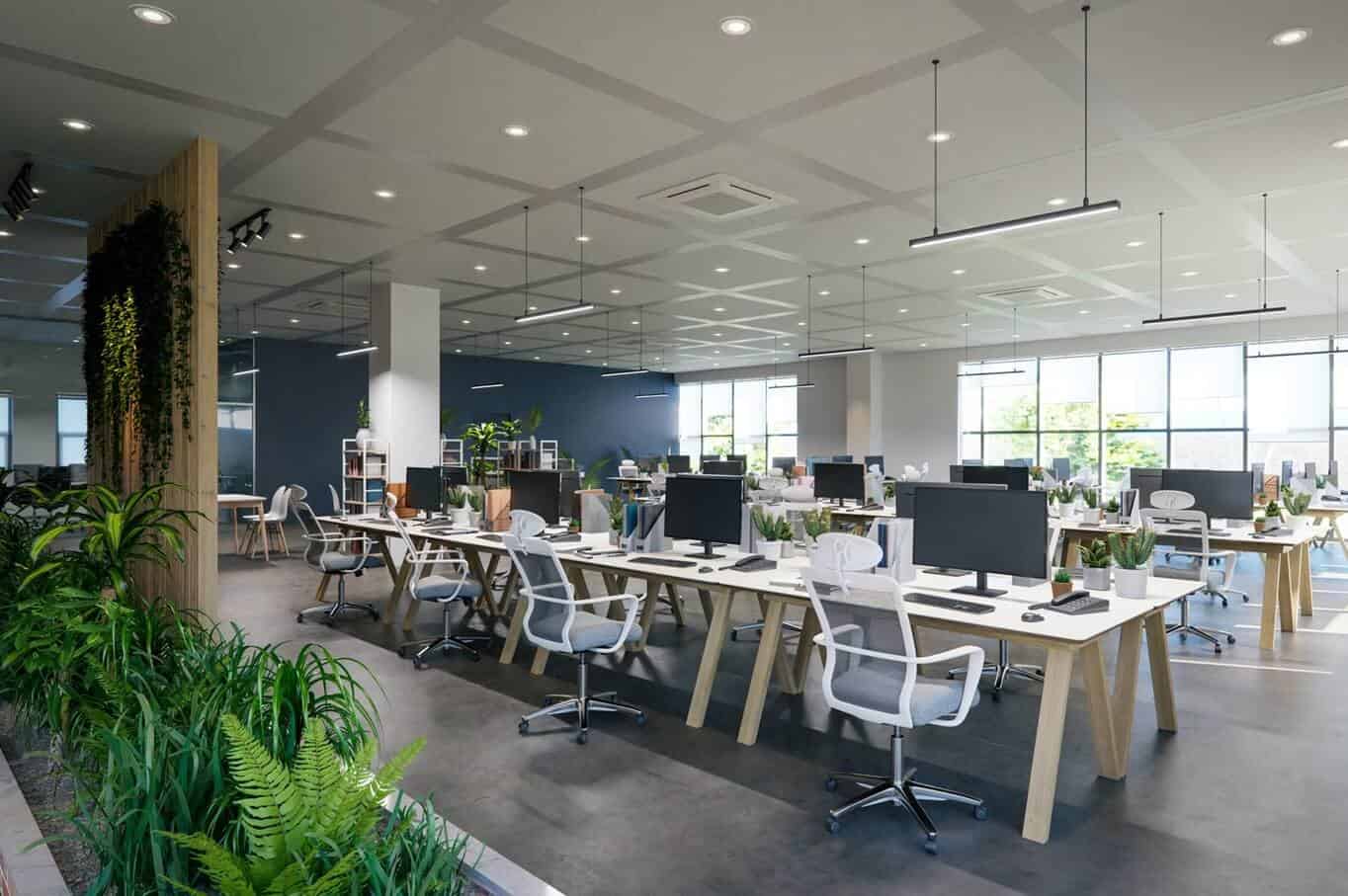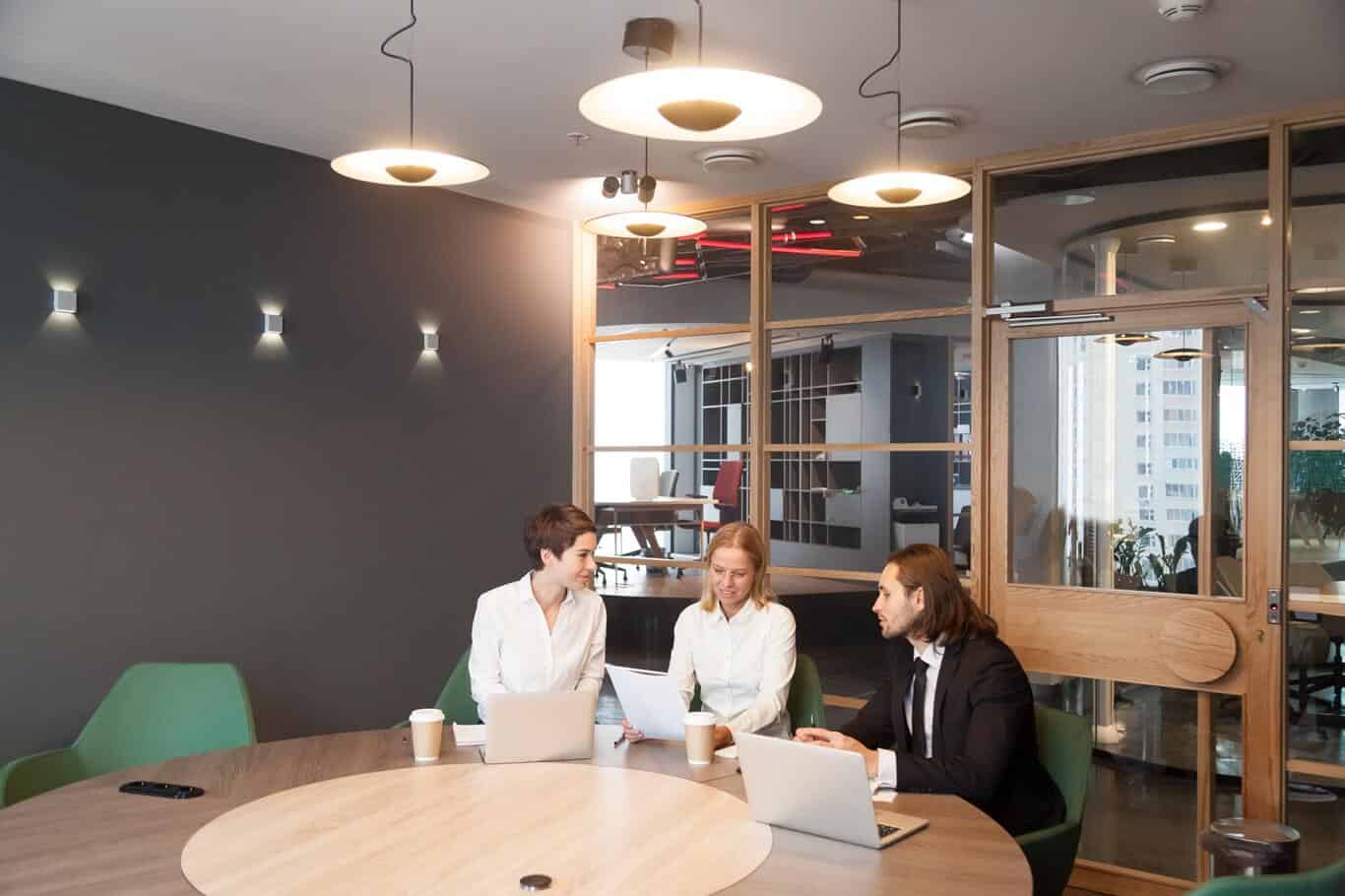Brand identity is like a company’s personality. It’s what makes it unique and recognizable. Just like how you have your own style, favourite colors, and ways of speaking, a brand has its own visual elements (like logos and colors) and messaging (like what it stands for and how it talks to people). It’s how a company presents itself to the world and how people perceive it.
Importance of using Brand Identity into corporate office interior design:
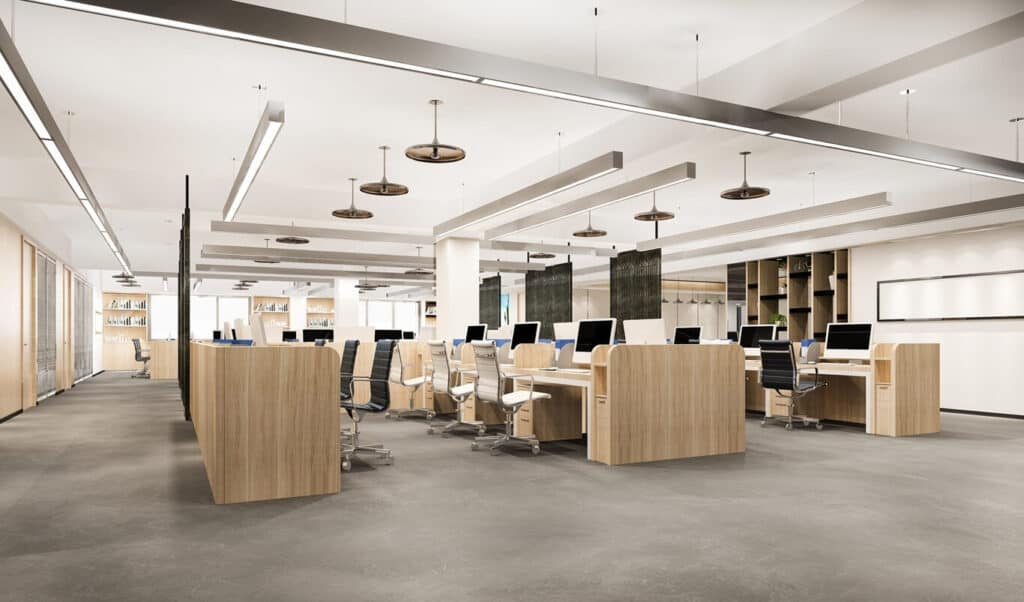
Imagine walking into a friend’s house and feeling like you stepped into their world because everything around you reflects their personality and interests. That’s the same feeling you want to create when someone walks into a company’s office. useing brand identity into corporate office interior design helps create a space that feels like it belongs to the company.
It’s not just about making it look pretty; it’s about making employees and visitors feel connected to the company’s values, culture, and mission. When people see the brand’s colors, logos, and messaging all around them, it reinforces what the company stands for and helps create a sense of belonging and pride. Plus, it leaves a lasting impression on clients and visitors, showing them what the company is all about right from the moment they step through the door.
Understanding Brand Identity

Understanding brand identity is like understanding a person’s personality. Just like how you know someone by their unique traits, a brand has its own set of characteristics that make it recognizable and distinct from others.
- Visual Identity: Just like how you recognize a friend by their face, brands have visual elements that make them stand out. This includes things like logos, colors, typography, and graphic styles.
- Messaging and Tone: Just as people communicate in different ways, brands have their own voice and style of speaking. This includes the language they use, the values they promote, and the emotions they evoke through their messaging.
- Company Culture and Values: Just like how you understand someone better by knowing their beliefs and values, a brand’s identity is shaped by its culture and values. This includes things like its mission statement, its commitment to diversity and inclusion, and its approach to sustainability.
- Consistency: Just like how you expect someone to be consistent in their behavior, brands need to be consistent in their identity. This means maintaining a cohesive look and feel across all touchpoints, whether it’s on their website, social media, or physical spaces.
Understanding brand identity is key to building a strong and memorable brand that resonates with people. It helps companies connect with their audience on a deeper level and stand out in a crowded marketplace.
Translating Brand Identity into Interior Design
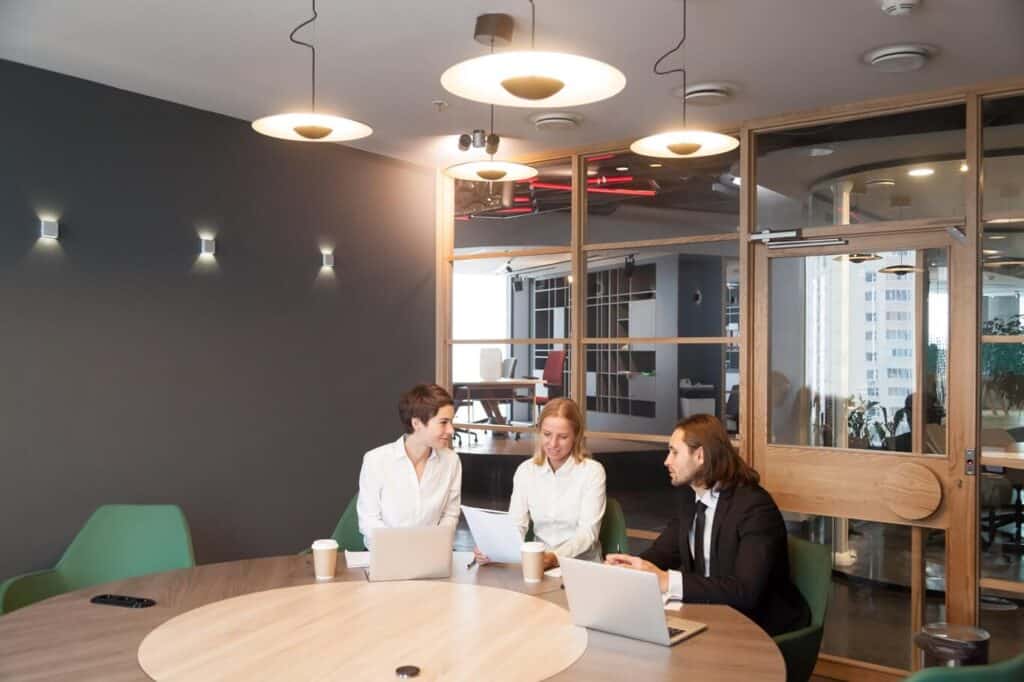
Translating brand identity into interior design involves capturing the essence of a company’s values, culture, and personality within the physical space of an office or workspace. Here are some key steps to effectively translate brand identity into interior design:
Visual Elements:
- Logo and Graphics: Incorporate the company’s logo and graphic elements into the interior design through signage, wall decals, or custom artwork. These visual elements serve as a visual representation of the brand and help reinforce brand recognition.
- Color Palette: Use the brand’s color palette as a guiding principle for selecting wall colors, furniture, and decor. Consistently incorporating brand colors throughout the space creates a cohesive and recognizable brand identity.
Materials and Textures:
- Choose materials and textures that align with the brand’s values and aesthetic. For example, a tech company might opt for sleek, modern finishes, while a sustainable brand might prioritize natural materials like wood and stone.
- Consider the tactile experience of the space and select materials that convey the desired brand message. Soft fabrics and plush furnishings can create a sense of comfort and luxury, while industrial materials like concrete and metal can convey a sense of innovation and durability.
Furniture and Fixtures:
- Select furniture and fixtures that reflect the brand’s style and ethos. For example, a forward-thinking brand might opt for contemporary, minimalist furniture, while a more traditional brand might prefer classic and timeless pieces.
- Customized or branded furniture and fixtures can further reinforce brand identity. Consider incorporating custom-designed pieces featuring the company logo or other brand elements.
Spatial Layout:
- office interior design plans of the space to reflect the company’s culture and values. Consider factors such as open-plan versus private offices, collaborative work areas, and breakout spaces. The layout should support the way employees work and interact within the organization.
- Create designated spaces for specific activities or functions that align with the brand’s objectives. For example, a brand focused on creativity and innovation might incorporate brainstorming areas or design studios into the office layout.
Brand Messaging:
- Use signage, wall graphics, or digital displays to communicate key brand messages and values throughout the space. Inspirational quotes, mission statements, or company values can serve as reminders of what the brand stands for and inspire employees.
- Consider incorporating storytelling elements into the interior design to showcase the brand’s history, milestones, and achievements. This can help create a sense of connection and pride among employees.
Feedback and Iteration:
- Throughout the design process, solicit feedback from employees and stakeholders to ensure that the interior design effectively reflects the brand identity. Be open to making adjustments and refinements based on feedback to create a space that truly embodies the essence of the brand.
By carefully considering these aspects and integrating them into the interior design, companies can create a workspace that not only reflects their brand identity but also a sense of belonging and inspiration among employees.
You Can Create corporate office interior design ideas with Officebanao
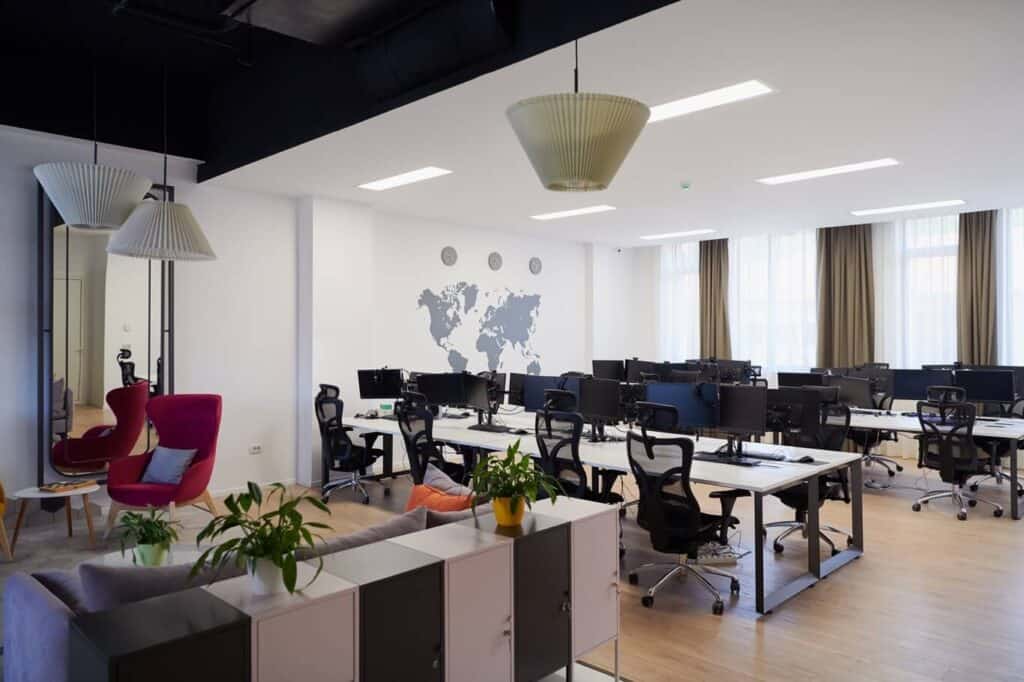
If you’re looking to modernise your office with stylish wall panel designs, you can count on the expertise of Officebanao’s team of interior designers specialising in office spaces. With a wealth of experience and proprietary technology, we excel in crafting contemporary and luxurious office interiors. Our emphasis is on delivering bespoke solutions that align with your brand identity and business objectives. We’re dedicated to providing the best in office interior design, tailored to meet your unique needs.


